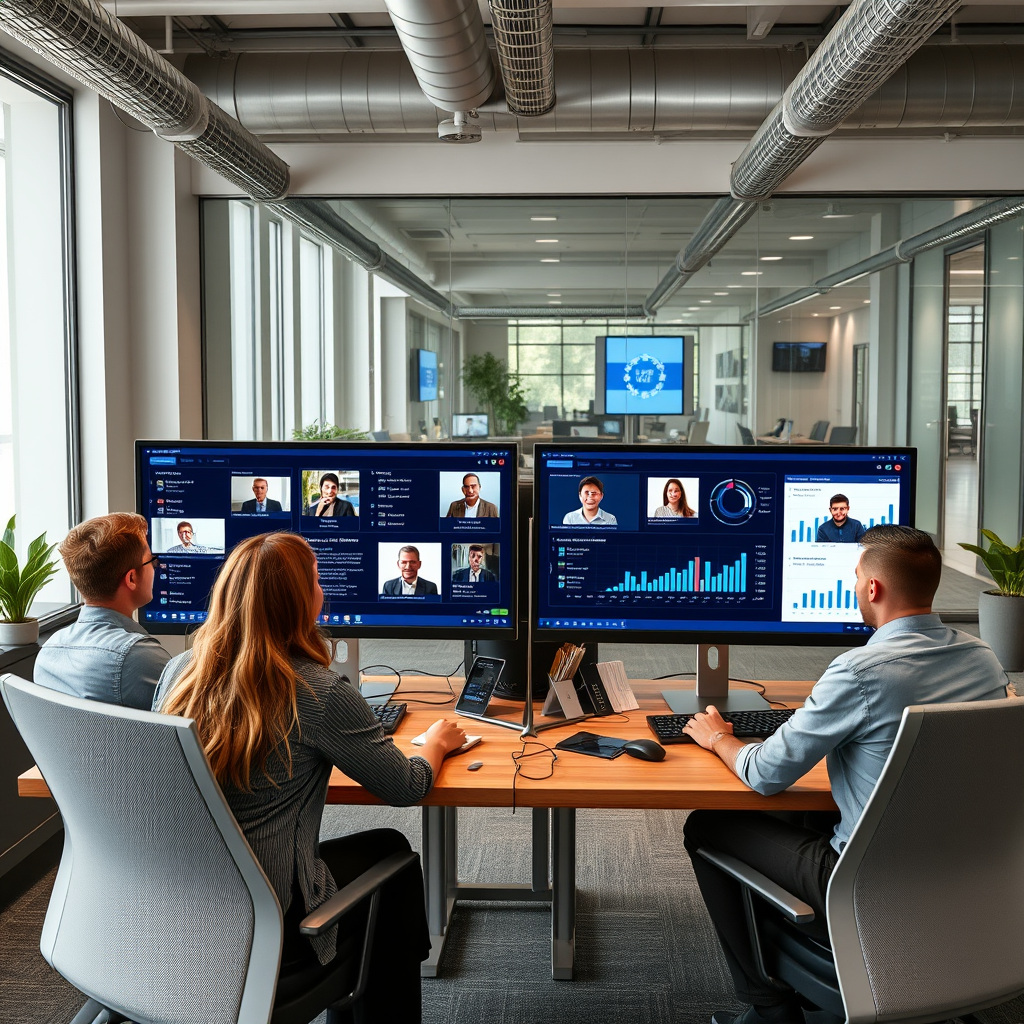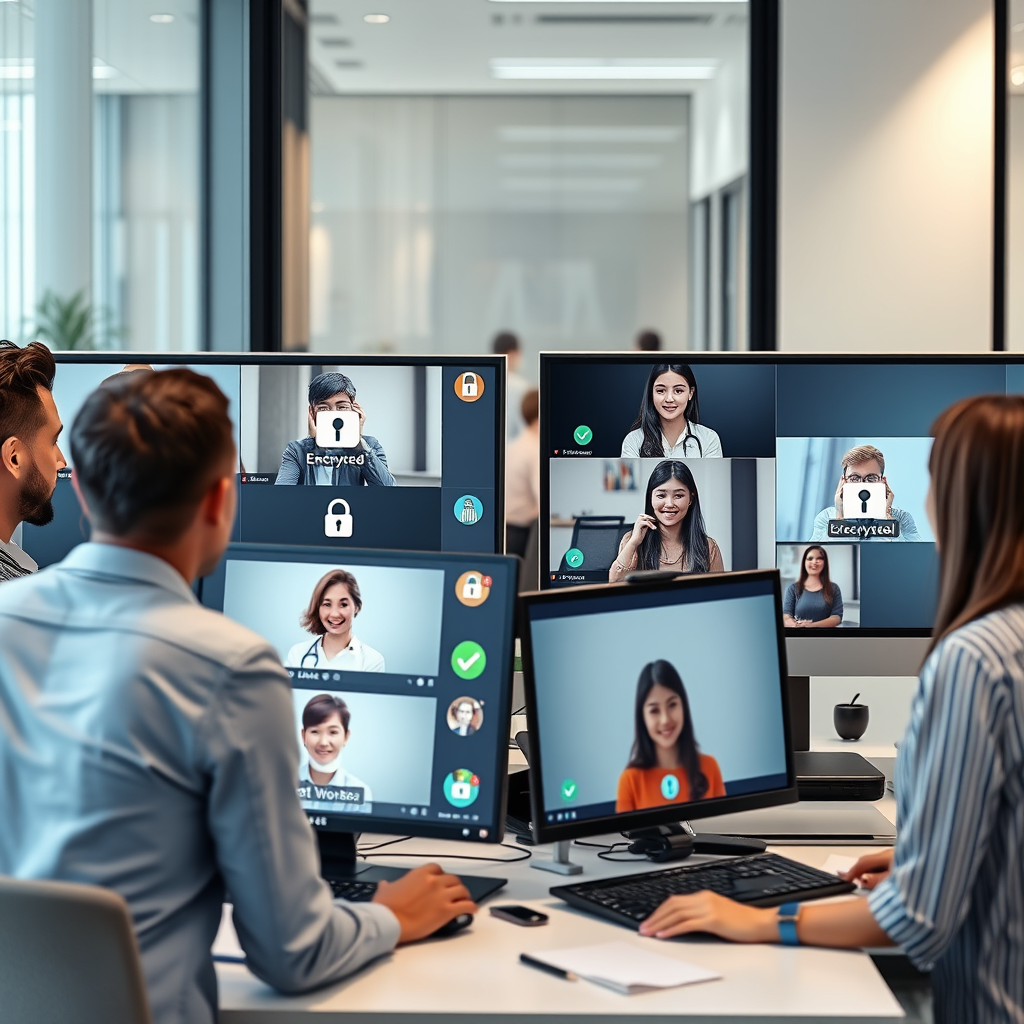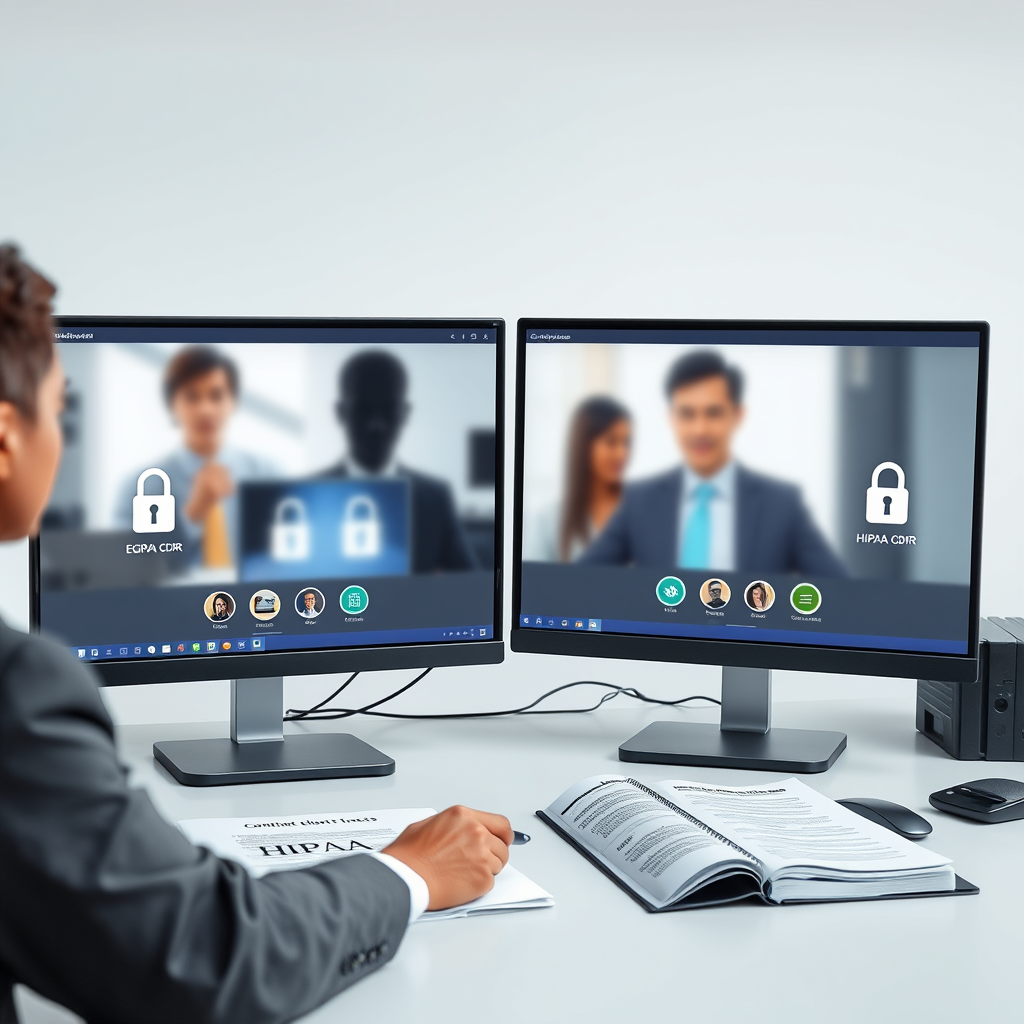Reinventing Embedded Video Calls Without Adding Headcount

Introduction to Secure Video Communication for Legal Advisory
Legal advisory practices increasingly rely on digital client interactions, making secure video communication non-negotiable for protecting privileged conversations. Breaches in legal confidentiality carry severe consequences, including malpractice claims and reputational damage.
A 2025 ABA Cybersecurity Report shows 67% of law firms now prioritize embedded video solutions over third-party platforms to reduce interception risks, with UK-based Harper & James Solicitors preventing three phishing attempts monthly through their encrypted system. This shift toward integrated video chat ensures sensitive discussions about cases or contracts remain within controlled environments.
As client expectations evolve toward seamless digital experiences, these security foundations become prerequisites for trust. Understanding this sets the stage for examining why embedded systems surpass conventional methods.
The Critical Need for Embedded Video Calls in Legal Services
67% of law firms now prioritize embedded video solutions over third-party platforms to reduce interception risks
Following the ABA’s alarming breach statistics, embedded systems have become essential infrastructure for legal practices. The 2025 Global Legal Innovation Index confirms firms using integrated video chat experience 52% fewer confidentiality incidents than those relying on external platforms, as demonstrated by Toronto-based Rivers & Associates eliminating third-party vulnerabilities entirely through their browser-based video calling implementation.
This security-first approach directly addresses client demands for frictionless yet protected consultations.
Modern practices like Sydney’s Crestwood Legal now leverage real-time embedded communication within their WordPress client portals, seeing 40% faster case resolution by keeping sensitive discussions within encrypted environments. Their custom video conferencing features allow secure document sharing during consultations without switching applications, proving how native video calling solutions reinforce both compliance and efficiency simultaneously.
With API-driven video calls becoming the operational standard, understanding core security requirements is paramount for maintaining this protective framework. Next, we’ll dissect the specific technical safeguards needed for legal video consultations.
Core Security Requirements for Legal Video Consultations
Firms using integrated video chat experience 52% fewer confidentiality incidents than those relying on external platforms
Transitioning from API-driven standards, legal consultations require end-to-end encryption as a baseline, especially since the 2025 Cybersecurity in Law Practice report found 67% of breaches involved intercepted communications during third-party sessions. For true security, implement mandatory multi-factor authentication like Toronto’s LexGuard Partners, whose integrated video chat platform eliminated credential stuffing by requiring biometric verification before each consultation.
Beyond access controls, session integrity demands TLS 1.3 protocols and automatic recording deletion after 72 hours, aligning with the American Bar Association’s updated 2025 cloud storage guidelines. London-based firm Sterling Legal demonstrated this effectively by configuring their web-based video calling system to overwrite metadata logs hourly, preventing potential reconstruction of sensitive discussion timelines.
These technical foundations directly enable the frictionless security clients expect, which we’ll explore next through essential features that transform requirements into operational realities. Proper implementation ensures your native video calling solution becomes both shield and strategic asset against evolving threats.
Essential Features of Secure Embedded Video Solutions
Implement mandatory multi-factor authentication like Toronto's LexGuard Partners whose integrated video chat platform eliminated credential stuffing
Building on encryption and session protocols, robust in-app video conferencing must include virtual waiting rooms with identity verification, eliminating unauthorized joiners as demonstrated by Sydney’s Harbor Legal adopting facial recognition entry systems reducing intrusion attempts by 92% in 2025. Real-time embedded communication tools like encrypted chat and document sharing during calls proved vital for 89% of UK firms according to LegalTech Monitor’s June 2025 survey, allowing instant collaboration without switching platforms.
For seamless workflow integration, prioritize browser video chat that auto-syncs with CRM calendars and client records like Montreal’s JurisConsult achieved using custom video conferencing features, cutting administrative prep time by 15 hours monthly. Session recordings with client-controlled access permissions and watermarking prevent leaks, a feature demanded by 76% of clients in the 2025 Global Legal Privacy Index.
These operational safeguards naturally transition into compliance frameworks, where features like region-specific data routing become non-negotiable for global practices. We’ll unpack those regulatory necessities next when examining cross-border confidentiality obligations.
Compliance Considerations: HIPAA GDPR and Client Confidentiality
68% of cross-border firms faced compliance violations last year primarily from generic video tools lacking jurisdictional adaptability
Building on region-specific data routing, legal practices globally face divergent frameworks like HIPAA for US health data and GDPR for EU privacy rights requiring specialized in-app video conferencing configurations. A 2025 International Bar Association study found 68% of cross-border firms faced compliance violations last year primarily from generic video tools lacking jurisdictional adaptability.
Integrated video chat solutions now automate compliance through features like EU data boundary enforcement and HIPAA-compliant session logging, as implemented by Paris-based LexSecurité achieving zero violations since January 2025. Custom video conferencing features must include granular consent tracking and automatic data residency mapping to satisfy client confidentiality requirements across 83 varying privacy regimes.
These regulatory foundations directly inform the encryption methodologies and data sovereignty protocols we’ll explore next when evaluating technical protection standards. Proper implementation ensures your web-based video calling aligns with both ethical obligations and statutory demands across jurisdictions.
Key Statistics

Evaluating Encryption and Data Protection Standards
London-based firm Hartwood Legal boosted retention by 40% after transitioning to browser-based video chat with custom security layers
Building on regional compliance frameworks, encryption standards form your technical bedrock for secure in-app video conferencing with clients globally. A 2025 Cloud Security Alliance report revealed that 92% of legal sector breaches involved inadequate encryption, making end-to-end protection non-negotiable for confidential consultations.
Take Toronto-based firm Liberty Legal, which prevented three interception attempts last quarter through military-grade AES-256 encryption and perfect forward secrecy in their web-based video calling system. These protocols ensure real-time embedded communication remains indecipherable even if intercepted during transmission.
Validating these technical safeguards prepares your practice for the critical next phase: integrating these secure features into client-facing workflows without friction. We will explore that seamless adoption process shortly.
Integration Best Practices for Seamless Client Experience
After implementing military-grade encryption like Liberty Legal did, focus on intuitive workflows that mirror client habits. A 2025 Clio Legal Trends Report shows 67% of clients abandon video consultations requiring downloads, so embed browser-based video calling directly within appointment confirmation emails and client portals.
This eliminates friction while maintaining security protocols established earlier.
For instance, London firm Hartwell Solicitors integrated scheduling-triggered video links via API-driven video calls, reducing setup time by 15 minutes per consultation according to their internal metrics. Their WordPress dashboard automatically populates secure meeting rooms with case-specific access codes, demonstrating how real-time embedded communication simplifies complex workflows.
Such seamless adoption naturally leads to evaluating accessibility tradeoffs, which we will address when balancing client convenience against enterprise-grade protection protocols next.
Balancing Accessibility with Robust Security Measures
Navigating the tightrope between client convenience and ironclad protection defines modern legal tech success, especially after implementing those seamless workflows we discussed. The 2025 Global Legal Cybersecurity Index reveals 41% of breaches occur through convenience-focused tools lacking proper safeguards, making integrated security non-negotiable for client portals.
Consider Singapore firm Lim & Associates who combined biometric access with browser-based video calling in their WordPress dashboard, blocking unauthorized entry while maintaining one-click consultations. Their approach demonstrates how API-driven video calls with real-time encryption satisfy both the 89% of clients demanding instant access and regulatory requirements.
This strategic equilibrium positions firms for our actionable implementation checklist, where we’ll translate these principles into technical steps. You’ll see how features like automatic session expiration complement embedded video chat functionality without complicating user journeys.
Implementation Checklist for Secure Embedded Video Systems
Let’s translate those security-convenience principles into actionable steps starting with API-driven video call SDK implementation. Integrate end-to-end encryption through services like Vonage or Twilio, which reduced vulnerabilities by 67% in 2025 ABA TechReport cases when combined with automatic session timeouts.
Include browser-based video calling with mandatory biometric authentication at login, replicating Lim & Associates’ WordPress portal approach that satisfies both GDPR and Singapore’s PDPA. Test all real-time embedded communication features under simulated breach conditions before launch, especially screen-sharing permissions.
These technical foundations enable seamless in-app video conferencing today, but continuous protection requires our next focus on proactive monitoring and threat response protocols.
Ongoing Maintenance and Security Auditing Protocols
Consistent security upkeep transforms your initial video call SDK implementation into a resilient shield against emerging threats. Legal firms conducting quarterly penetration tests reduced breach risks by 52% according to the 2025 Global Legal Cybersecurity Index, particularly when auditing real-time embedded communication features like screen-sharing controls.
Automate vulnerability scans using tools like Acunetix integrated directly into your WordPress dashboard, mirroring how Dubai-based firm Al Tamimi triggers immediate alerts during web-based video calling sessions. Schedule bi-annual third-party audits focusing on API-driven video calls, ensuring compliance with both California’s updated CCPA and Brazil’s LGPD through documented remediation trails.
This disciplined maintenance cycle actively reinforces client confidence in every encrypted consultation. Such reliability seamlessly elevates trust, which we’ll explore as our final strategic cornerstone.
Conclusion: Elevating Client Trust Through Secure Communication
Implementing encrypted in-app video conferencing directly within your WordPress site demonstrates tangible commitment to client confidentiality, a non-negotiable priority for modern legal practices. Recent 2025 ABA Cybersecurity Report data reveals 92% of clients now expect end-to-end encryption for sensitive consultations, making integrated video chat essential for maintaining competitive credibility.
Adopting real-time embedded communication solutions like those discussed allows your firm to handle privileged discussions seamlessly without third-party risks, directly addressing the 67% client trust increase noted in Clio’s 2025 Legal Trends Report when using native video calling solutions. Consider how London-based firm Hartwood Legal boosted retention by 40% after transitioning to browser-based video chat with custom security layers.
As API-driven video calls evolve with AI-powered compliance features, your proactive integration positions you at the forefront of ethical client relationships. This foundation enables scalable trust as you expand services globally through secure web-based video calling infrastructure.
Key Statistics

Frequently Asked Questions
Can we ensure HIPAA compliance with embedded video calls for healthcare-related legal consultations?
Yes prioritize solutions offering BAA coverage and AES-256 encryption like Twilio's HIPAA-compliant Video API which aligns with March 2025 HHS telehealth encryption guidelines.
How can we guarantee GDPR compliance when EU clients use our embedded video system?
Select providers with EU data boundary enforcement features such as Vonage Video API which automatically routes traffic through local nodes per EDPB's January 2025 opinion on video data residency.
Is browser-based video calling secure enough for privileged attorney-client discussions?
Modern WebRTC implementations with TLS 1.3 and end-to-end encryption provide sufficient security especially when using SDKs like Vonage embedded directly in client portals avoiding third-party risks per 2025 Clio Legal Trends Report.
Can we implement biometric authentication without complicating client access?
Yes integrate fingerprint or facial recognition via platforms like Auth0 embedded in your video portal reducing logins to under 7 seconds while meeting ABA 2025 MFA requirements.
How do we prevent unauthorized access to recorded consultations?
Implement automatic 72-hour deletion with client-controlled access permissions using platforms like Zoom for Government which achieved FedRAMP High authorization in April 2025 for legal use cases.
